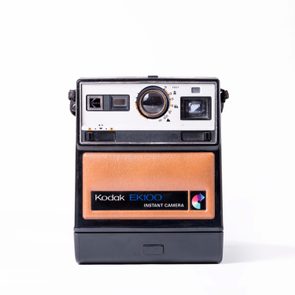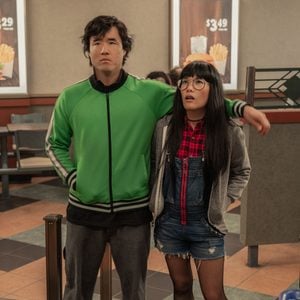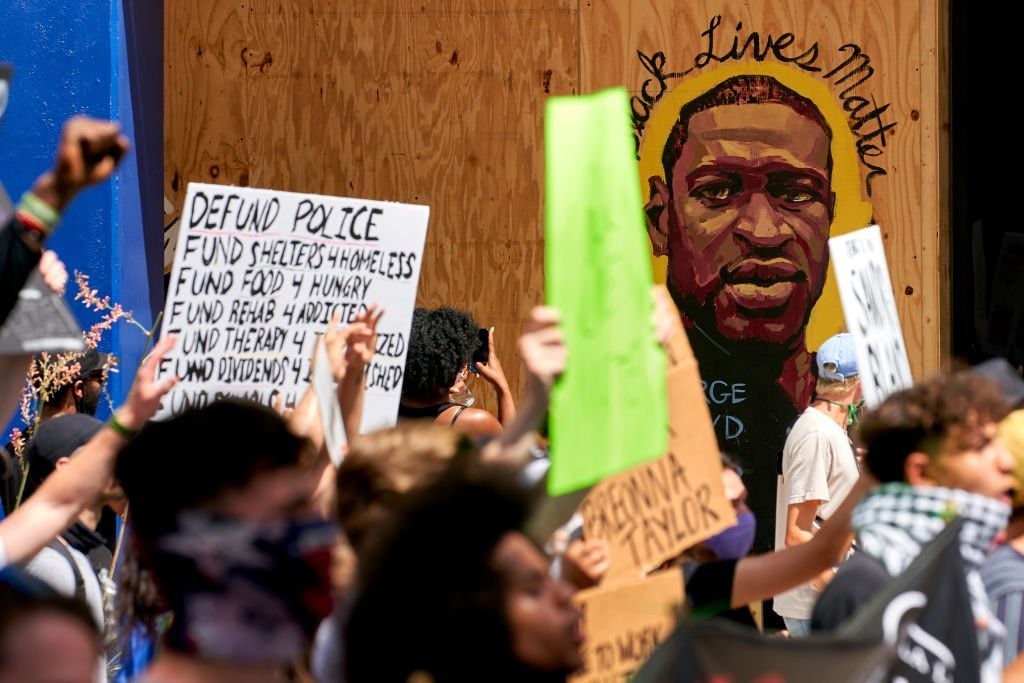
Defund the police, explained
One month after the murder of George Floyd on May 25, the Minneapolis Black man who died in police custody, protestors and pundits have amplified one resonant action item: “defund the police and refund the people.” For some who are listening, it sounds like an expensive government giveaway. For others, this rally cry sounds like an appeal for anarchy.
Rest easy: “defund the police and refund the people” is not a call for police-free pandemonium, nor is it a sly trick to decrease taxes. This movement actually seeks to increase public safety by redirecting existing public dollars toward health, human services and other innovative solutions.
“We need to see a shift from massive spending on police that don’t keep us safe, to a massive investment in a shared vision of community safety that actually works,” says Monifa Bandele, senior vice president of the Seattle-based MomsRising. “Rather, investing in health care, mental health services, education, addiction treatment, housing, re-entry support, and food security helps to keep families and communities safe.”
Bandele also sits on the Leadership Policy Team of the Movement for Black Lives, a network of over 150 Black-led organizations from across the United States. “Right now, some police budgets exceed the budget for these critical services combined,” she adds.
Doesn’t more police funding reduce crime?
Bandele says no. “In fact, the data shows that reducing the numbers of police officers and the size of police departments could actually reduce crime,” she reports. “Back in 2014, the New York Police Department staged a halt of aggressive police tactics as part of a protest. But the effect wasn’t what they expected: Crime actually went down when cops took a more passive role.”
Where should the funds go instead?
MomsRising supports the “defund the police” movement because diverting funds from policing and using that money to support children and families benefits society. “Most people don’t know that 1.7 million students [in the United States] are in schools with cops, but no counsellors,” Bandele explains. “Three million students are in school with cops, but no nurses. Six million are in schools with cops, but no school psychologists. Ten million are in schools with cops, but no social workers.”
Overspending on police in communities where children’s basic needs are not met will not reduce crime. Instead, reallocating a portion of that money to support families—in areas like health care, for example—reaps dividends that benefit society by reducing crime over the long haul.

What about police reform?
Extensive reform efforts have tried and failed, according to Alethea Cheng Fitzpatrick, principal and founder of Co-Creating Inclusion. “For example, the Minneapolis police department has spent millions of dollars on exactly the kind of work that I do as a DEI [diversity, equity, and inclusion] consultant—data gathering, training, policy changes, community dialogues, etc,” Fitzpatrick says. “What I know from my work is that while we can create a lot of change at the institutional level, there are systemic limitations.”
“Defunding the police is not just about taking money away from the police,” she adds. “It is about redirecting it to other systems such as housing, employment, healthcare, education, etc. that can reduce the need for the police in the first place.”
Is this change starting to happen?
According to the results of a recent survey by Léger and the Association for Canadian Studies, a majority of 72 per cent of Canadians—including 71 per cent of Quebecers—say they support the anti-police brutality protests. People aged between 18 and 34 are most in support, at 78 per cent.
In Toronto, two city councillors have proposed a motion that calls for a 10 per cent cut to the police budget. The group Not Another Black Life, meanwhile, have been leading peaceful ‘defund the police’ protests in the city’s downtown core.
“But I believe in law and order”
“We want communities to be safe for everyone,” Bandele insists. “In the current system, Black people are not safe, even when dealing with those we literally pay to protect us.” Everyone who pays taxes funds the police—and then pays even more when the police they pay engage in misconduct.
Ralph Richardson, an executive producer of American Trial: The Eric Garner Story (and my husband) identifies police brutality as one of the most wasteful expenditures of public funds. “I’ve always asked the question: Why do taxpayers fund bad cops?”
What would a “defunded” police system look like?
The police respond to 911 calls to manage mental health and substance abuse problems, even when no crime has occurred. Why? There’s often no one else to contact for rapid-response help in a crisis.
Back in 2014, the American Psychological Association shared data from a report that found “64 per cent of jail inmates, 54 per cent of state prisoners, and 45 per cent of federal prisoners” in the Untied States have mental health concerns. The same report found “substance abuse is also rampant and often co-occurring.”
Imagine a new system, where health care workers trained and equipped for rapid response could be reached via 911, or even a number like 511. Instead of armed cops barely trained to understand these wellness problems, unarmed support teams arrive to support individuals in crisis and, instead of jail, transport them to facilities where they can receive evaluation and treatment.
For more than three decades, the city of Eugene, Oregon, has reduced costs and decreased violent encounters with the police through a mobile crisis intervention program. Instead of police, residents can call a medic and crisis worker for help for people struggling with mental illness, substance abuse, and/or homelessness.
With an infusion of resources diverted from punitive police forces, cities could use the Eugene model to offer wellness opportunities that produce healthier outcomes that benefit everyone. Several European cities have also implemented some version of the “defund the police” model that North Americans have taken to the streets to demand.
Next, find out why you should stop saying “I don’t see colour.”

Lest We Forget
Since 2005, when I first started up Veteran Voices of Canada as a non-profit dedicated to sharing the stories and memories of our country’s war veterans, my colleagues and I have been travelling across Canada documenting these stories and experiences on camera. The taped interviews are then edited and donated to the family of the veteran as a keepsake, as well as to educational institutions across Canada as a teaching resource. The video clips are also posted on our website for a wider audience.
Documenting the experiences of Canadians who sacrificed so much for the freedoms we have today has led to the creation of an invaluable video archive over the years—to many, it’s an historical treasure. Travelling where needed and as funds allow, we visit surviving veterans of World War II and the Korean War, as well as Canada’s more recent veterans, to document their historically important military service.
Above all, the aim of Veterans Voices of Canada is to ensure our continuing Canadian military history, and those who helped make it, will never be forgotten.
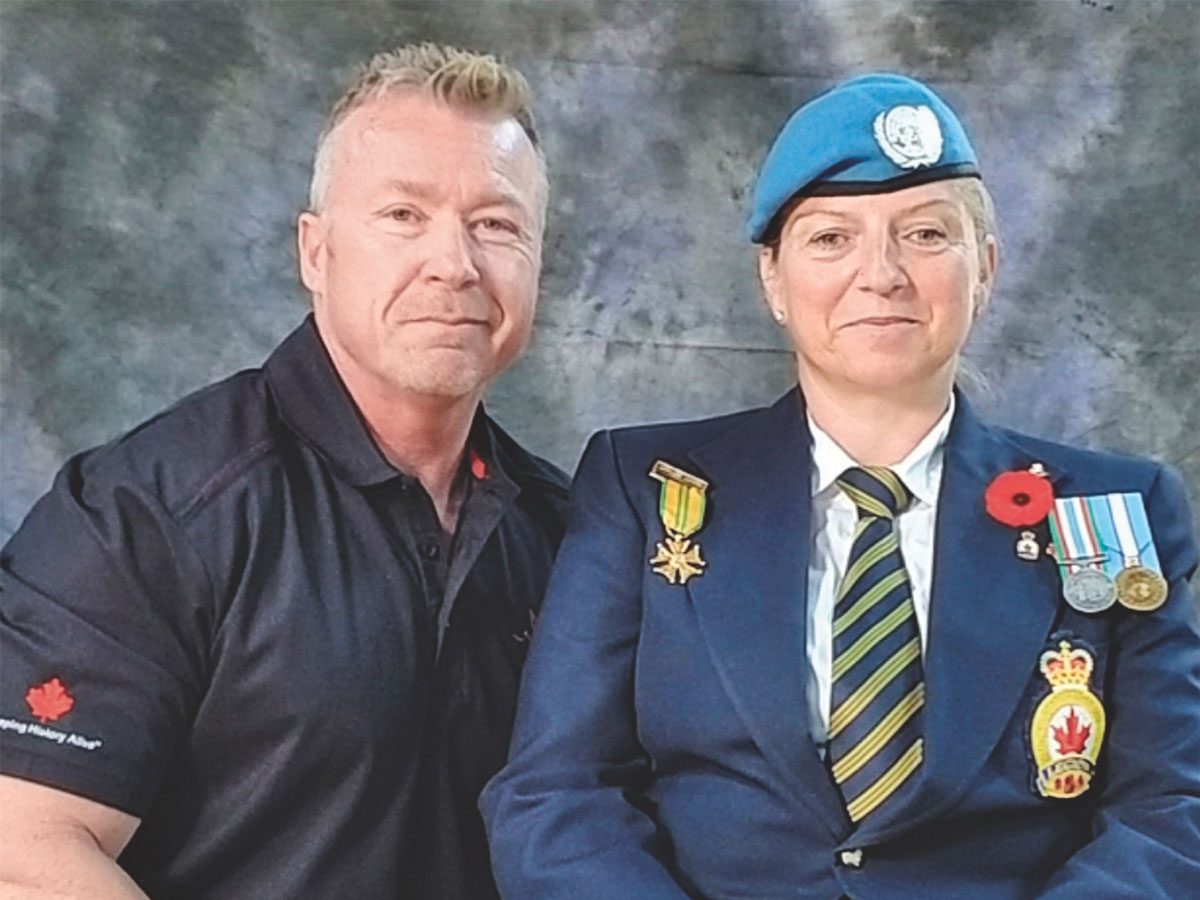
To date, we have documented the stories of nearly 2,000 veterans across Canada. Because of the way we conduct our interviews, and through word of mouth, we have many more veterans who are ready and willing to share their stories. Although we are losing our Second World War veterans at an alarming rate, many are thankfully still with us; together with their brothers-in-arms from the Korean War and more current deployments, they are awaiting their turn to have their experiences documented via Veteran Voices.
An important aspect of our approach is that we also pay tribute to our veterans both past and present through “living history” displays in communities across Canada every fall.
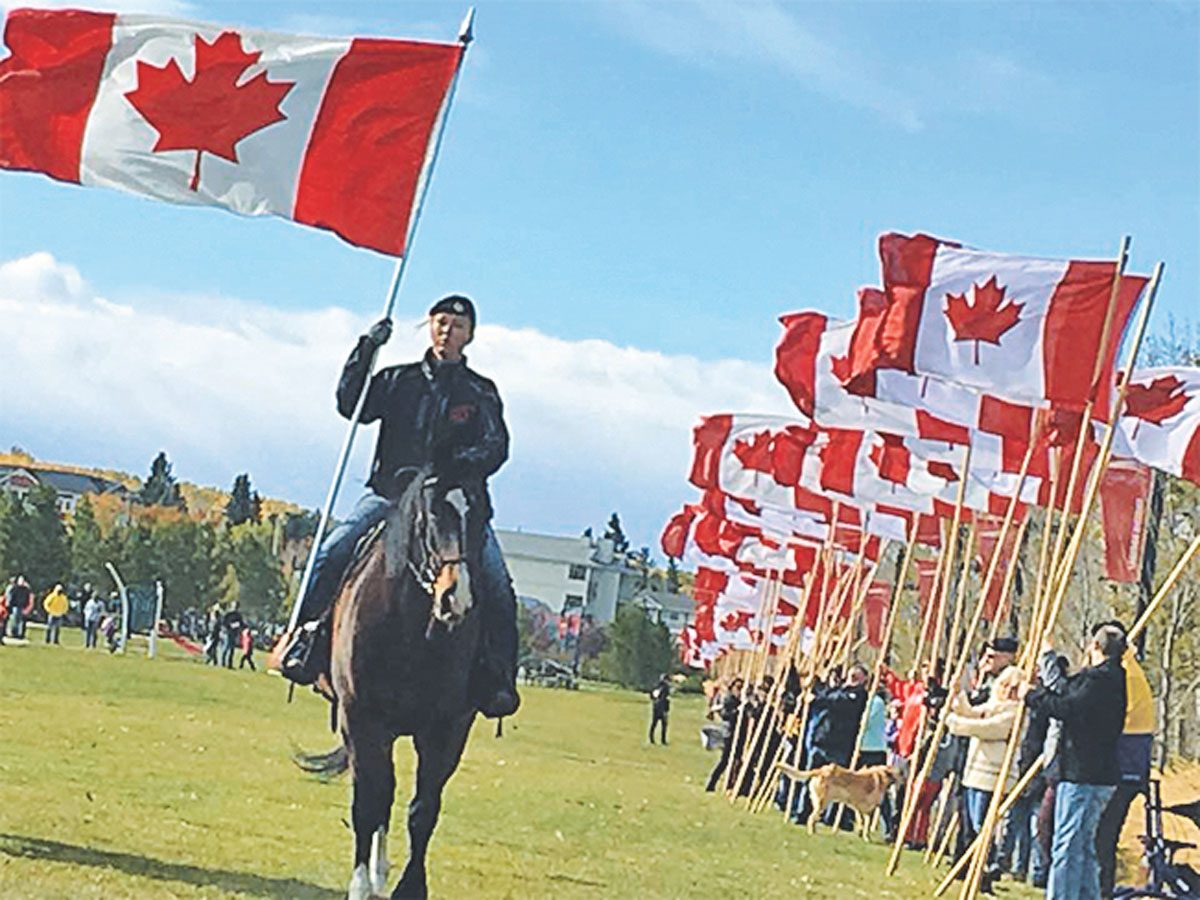
In 2017, we began our now annual Veterans Voices of Canada—Flags of Remembrance ceremonies, which pay tribute to the 128,000 Canadians in total who were killed or listed missing in action over the years, including those in the military and RCMP, from the Boer War to current missions. We also began to honour Canada’s first responders in 2017, with the names of those honoured inscribed on one of 128 sponsored Plaques of Honour at each of our tribute sites. Our ultimate goal is to have 128 communities from across Canada partner with and assist us in mounting a Flags of Remembrance tribute in their region in the fall of every year, thereby extending “Remembrance” beyond the one day currently set aside for such activities.
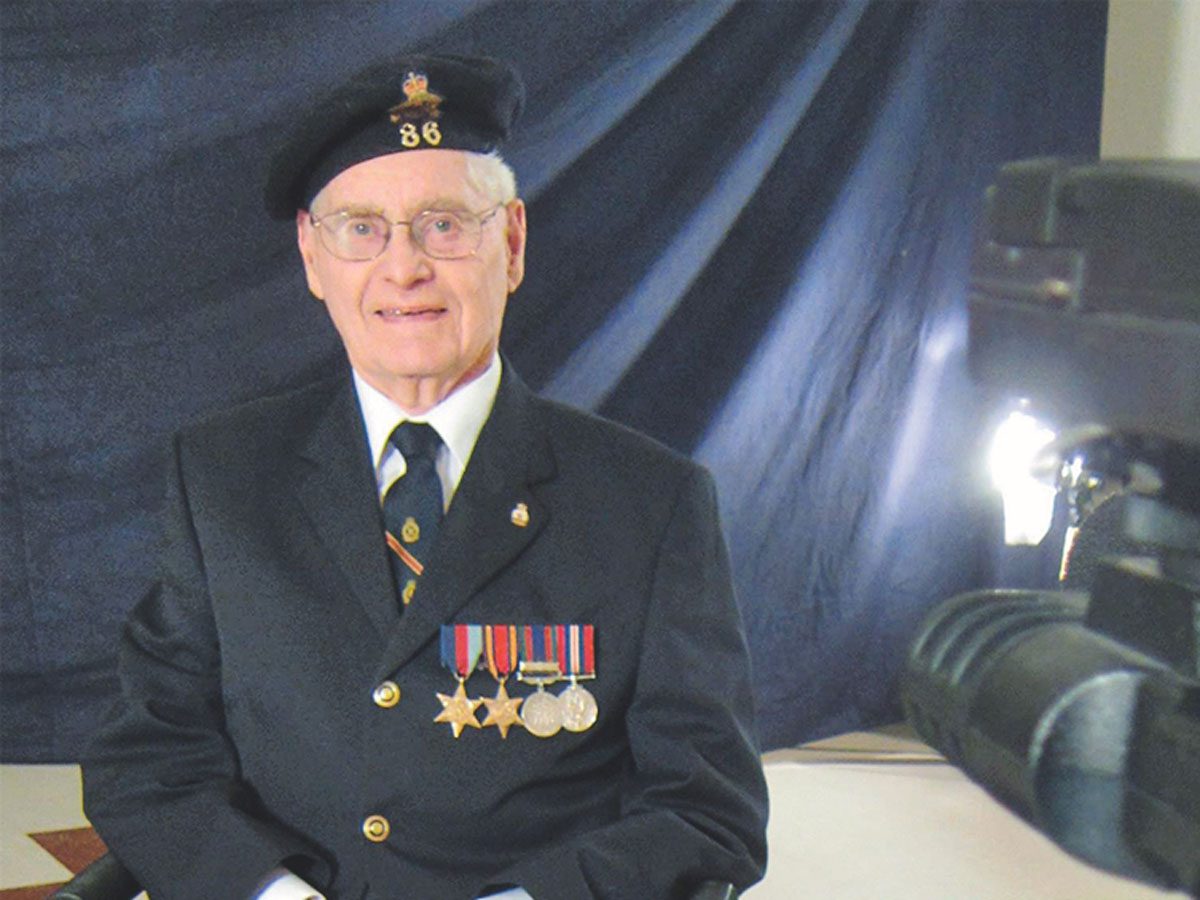
We have many educational and learning plans ahead, including opening a military history and learning centre in my hometown of Sylvan Lake, Alta. This centre will house and display authentic and replica military artifacts of historical and educational significance, and will be of interest to all. We will also highlight interviews with veterans we’ve conducted along the way, many of whom have donated memorabilia.
As you might expect, all of this requires funding and sponsorship. We have many volunteers helping make all this happen and, in the end, the only thing slowing down our important work is securing ongoing funding. This is where you can lend a hand. If you would like to help us keep Canadian military history alive via a tax-deductible donation, please see the details provided (below).With your help, we can continue to make a difference!
To find out more about our partner in bringing you the Veteran Profile page in every issue, visit vetvoicecan.org. If you wish to, click on the donation page or mail your donation to Veterans Voices of Canada, P.O. Box 255, Red Deer, AB T4N 5E8
Next, learn how Cree code talkers from Alberta helped win WWII.

Public transit and the risk of catching coronavirus
While science hasn’t found public transportation to be a major source of catching COVID-19, this doesn’t mean the virus isn’t present on trains and buses—it just means there may be effective means to avoid catching it.
Put your face mask on
“Understand that the virus is still among us, protection works, and we need to use it and be cautious,” says Suzanne Willard, clinical professor and associate dean of global health at the Rutgers School of Nursing in New Brunswick, New Jersey. “It is important that as we see more people around we should not be complacent that the virus has gone away.”
Masks prevent respiratory droplets from being expelled and infecting others when a person talks, coughs, or sneezes, which is the main way the virus is transmitted.
In a June 2020 review in the journal The Lancet, face masks, specifically N95 or similar respirators, were found to be effective at preventing virus transmission. And on some mass transit systems, such as Toronto’s, masks are now required.
If you normally used your train time to scarf down breakfast or have a coffee, that would obviously require removing your mask, so it’s also best to avoid eating or drinking until you’re at your destination to avoid getting sick.
Consider eye protection
The previously mentioned Lancet study also found that eye protection, such as goggles or a face shield, worked to reduce the risk of catching coronavirus. The CDC says COVID-19 can “possibly” be transmitted through the eyes.
What about gloves?
“Gloves work, but hand washing [is important] when you get to your destination,” Willard says. Gloves are effective only if you don’t touch your face: It’s not the virus getting on your skin that makes you sick, but touching your mouth, nose, or eyes with contaminated hands—whether you’re wearing gloves or not.
You also need to take gloves off correctly to avoid contaminating yourself; and you still need to wash your hands when you get to where you’re going. If you’ve touched your cell phone in transit, wipe that down as well.
Try not to touch surfaces—or your face
Whether you’re wearing gloves or not, be careful where your hands go as soon as you enter the station. A secondary way to get sick? “Touching surfaces others have touched,” Willard says.
Many transit systems are implementing more stringent cleaning methods and experimenting with new ways of sanitizing. Still, push turnstiles with your hip instead of your hand, and if you must hold a strap or pole to keep your balance once onboard—you certainly don’t want to be falling into anyone—be aware not to touch your face afterward.
Try to keep your physical distance
Anyone who’s ever been on a crowded subway platform, train, or bus may think keeping six feet apart will be a joke—but with your city and transit system’s help, it might be more possible than you think.
Toronto, for example, is planning to increase service to provide more space, to have floor markings for where people should stand, and to have increased personnel to assist with managing riders.
“Try to be socially distanced,” Willard says. After all, riders will be together in “small spaces, all being in close contact with people who you don’t know where they came from,” she says. For example, instead of squeezing in to get a seat, consider standing in order to keep more distance. The CDC even recommends leaving a row of seats between you and other passengers when possible.
Turn away from people to have the least chance of droplets landing on you, especially if someone is talking loudly, as a June 2020 PNAS study suggests that may increase the likelihood of virus transmission due to the speech droplets being released.
Avoid rush hour
Talk to your boss to see if you can come in and leave early or late as well, and allow plenty of extra time to get to work so you don’t feel pressured to hop on a crowded train when the next, less crowded one may be only moments behind.
And even if you’re in a hurry, wait for everyone to get off before boarding—that’s just good mass transit etiquette anyway.
Walk for at least part of your journey
Even if you can’t walk the entire distance of your commute, consider walking for part of it to reduce the amount time you’re on public transportation—maybe get off before the stop where your subway normally gets more crowded, or if you take a bus and a train just take one and walk the other.
“Walking is great exercise, but if the street is crowded, that can also be a challenge,” Willard says. Some cities are closing roads and creating more space for pedestrians to maintain social distance.
Next, learn the ways shopping will change after the pandemic ends.
Ask An Expert: As Canada Starts to Reopen This Summer, How Can I Social Distance Safely?
Reader’s Digest Canada: After a long lockdown, things have started to open up across Canada, but we still need to keep a distance. Have we learned anything new about exactly how much distance? Is it still two metres?
Infectious disease specialist Dr. Isaac Bogoch: That number is somewhat arbitrary, but it was chosen because it’s reasonable, it works and it’s easy to remember. In many parts of Europe, they’re staying 1.5 metres apart. In the United States, they say six feet apart. These are not identical distances, but they all do the job.
The key point is for people to spread apart from other people when they’re out of the house. And when they’re not in a position to practice physical distancing, they should strongly consider wearing a mask.
I’ve noticed people are often wearing their masks around their necks, and then putting them back on when they feel like it’s needed. Is it safe to be doing that?
When people are out and about, they might be touching surfaces around them—getting in and out of a store, for example. They should be mindful of that as they may infect themselves unintentionally by touching their face while they’re adjusting their mask. The best thing is for people to sanitize their hands before they put their mask on and after they take it off, so it’s helpful to have some hand sanitizer nearby to make that more convenient.
Now that it’s warm out, we may head out to a park or a beach and discover a crowd when we arrive. If that’s the case, should we stay or leave?
It’s important to have situational awareness. Look at the environment around you. Are you comfortable with it? If not, it’s always okay to take ten steps back. If it’s not aligned with your perception or tolerance of risk, then leave. It’s the same at the grocery store. There might be an aisle that has a lot of people in it. Go down a different aisle and come back later when there’s fewer people in that aisle.
Some cities are painting circles in parks to help people keep distance. Do you think that’s effective?
Certainly the circles might help people have more situational awareness and adhere to physical distancing measures. Is it going to be effective 100 per cent of the time? Of course not. But I think it’s helpful and I’m always supportive of inexpensive, potentially high-yield interventions.
What other measures can cities take that may help?
There’s been a lot of chatter about increasing public spaces in urban environments. So rather than have crowded sidewalks, cities would close some streets to traffic and make more room for pedestrians.
What outdoor activities are the safest?
The risk of transmitting this infection outside is very, very low. So anything that involves being physically distant from other people is safe—going for walks or a jog, hanging out in a park with friends or family. Remember, though, just because you’re outside, it doesn’t mean you won’t touch high-contact surfaces. So you should still have hand sanitizer with you.
What about playing tennis, badminton or throwing a frisbee—games where you can be distant, but there are objects passed between people?
The risk is small, but not zero. With badminton and tennis, I’ve heard of people making sure that each participant has birdies or balls that only they touch. Golf is another activity where you can spread apart from other people and you’re not touching the same high-contact surfaces.
Some people might want to rent a place away from home to get a change of scenery. How safe is that?
Well, the first step is to find out if you’re allowed to, because the rules of where you’re living might be different from the rules of where you’re thinking of renting. It’s likely low risk, and can be done in a safe manner if you practice physical distancing, wash your hands and use a mask when necessary. But keep in mind that we’re living in a time where the risk is never going to be zero per cent. If you’re at a greater risk of having a severe infection, and if the place you want to go is an area with a higher rate of transmission, you might think twice about going.
Should I make sure the place I’m renting is empty for a certain amount of time before I show up?
The virus can live on surfaces from anywhere between two hours and two days, so you should take that into consideration. That said, there are easy ways to disinfect high-contact surfaces with commercial cleaning products that will reduce the risk. However, you do still have to get there. You might need to fill your car with gas or take public transportation. You’ll have to buy groceries or get food from a restaurant. You’re still interacting with the world around you.
We know that this infection can be transmitted by people who are not showing overt signs or symptoms. Some people have more difficulty with uncertainty than other people. You might ask yourself whether the holiday is going to be filled more with concern than enjoyment—in which case, it may not be worth it.
And what about camping? Heading into the Canadian bush must be one of the safest things to do right now.
It is a low-risk setting—you’re outside, probably with the same group of people that live under your roof at home. But again, to go camping you might need to get gas, or go to the store to get some supplies. But you can do it safely, abide by the local rules and laws in place and have a wonderful time.
We also asked: can I catch coronavirus from my clothes?
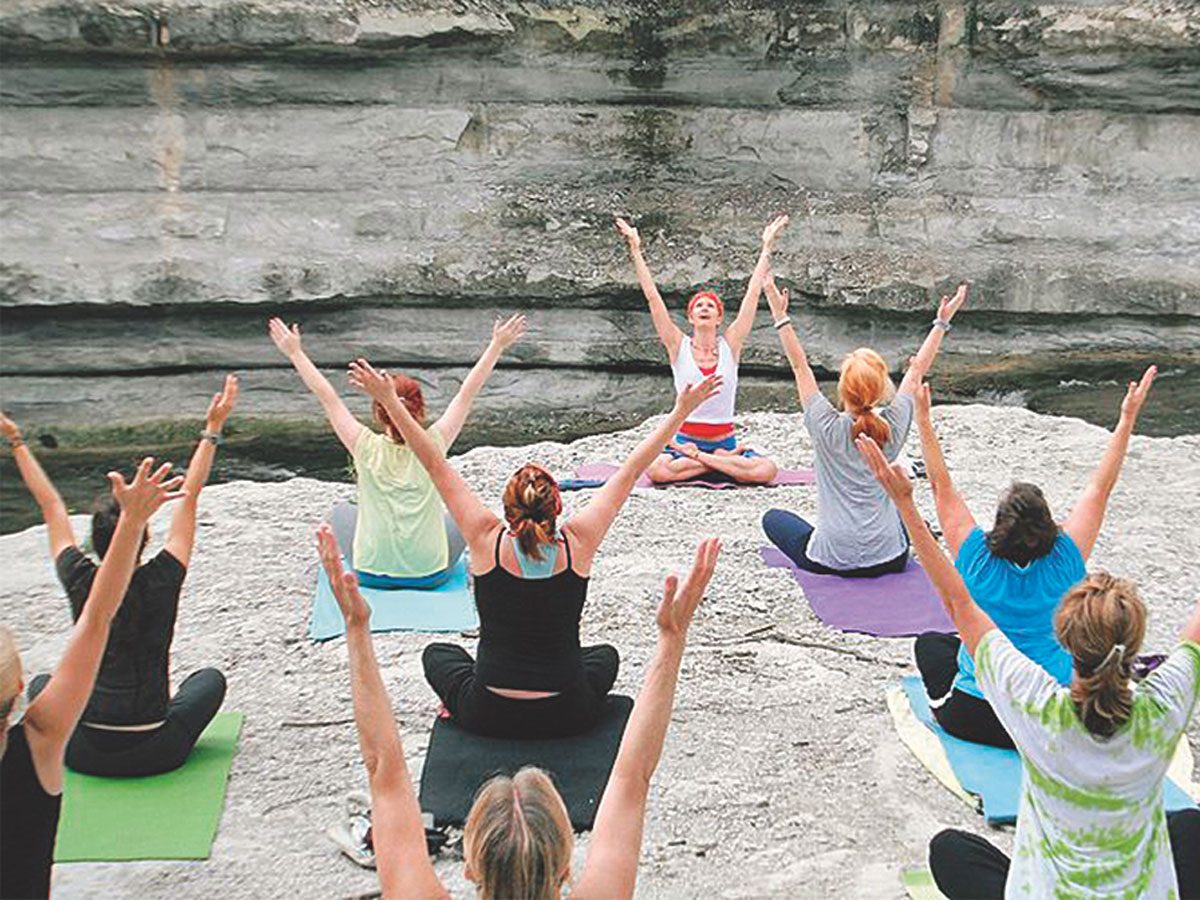
Where there’s a will, there’s a way
When I was reinventing my life at 50 years old, after working non-stop in various careers since I was 16, I thought a fresh business plan would be a good idea. I had recently fallen in love with yoga and all the benefits I was receiving from the practice, so I wanted to spend the rest of my working career sharing that with others in community recreation and senior living homes. Full credit goes to my father, who was my inspiration to pursue this new path thanks to his deep spirituality and dedication to always keep moving.
When planning to enter this new phase of my life, I took every possible scenario into consideration to make sure I had a solid safety net as my husband and I are both self-employed, therefore our financial position was always going to be a bit riskier doing what we love. I did not take into account a pandemic, however! Who would have thought that a career in fitness, recreation and senior health would ever be at risk?
On March 17, things came to a full stop (the luck of the Irish in me was absent). I had four teaching contracts cancelled and I was one of the many self-employed business owners who found their shingle turned to “closed indefinitely.” Recreation centres were all closed and seniors homes all shuttered against this deadly virus.
It took a full week to get grounded again as the surreal news that has taken over the world now became a reality. What to do? I still felt the need to keep the momentum of our yoga community going as everyone, including me, did the right thing by practising social distancing. So, I dug deep and stopped being intimidated by the idea of using technology and social media to continue my lessons. I’m still learning, I probably always will be as the social media world is fluid and seems to change every day, but we are connecting in every way we possibly can.
Sometimes it’s through YouTube meditations that I clumsily put together for them as I teach myself how to offer an online class in real time. It truly warms my heart to see emails and texts between “my people” every few days, as they check on one another to see how they are all doing. This community has given me so much more than I ever would have expected, and it continues to do so, despite the threat of the COVID-19 pandemic looming over our lives.
I do really miss my students and wonderful, inspiring seniors. I especially miss the warm camaraderie and generous hugs that are so freely given when we have all shared a safe space, movement and the letting go of worries through our yoga practices.
So, we’ll do the best we can and hold strong to the hope that we will all be in the same room again soon, sharing the benefits of mind, body, and spirit healing. Something we could all use even more of during these difficult days.
Next, learn about the group that inspired thousands of Canadians to help each other through COVID-19.
Self-isolation is easier when you live in a gated community and your front door is snowed in.
My name is Dee Long, guitarist, keyboard player and vocalist with the ‘70s Canadian band Klaatu. My wife Sydney and I are both 68 years old. I have several medical conditions, including asthma, and we are both considered at risk from this new virus.
That is why we have been self-isolating for weeks now. We live in a log cabin home in Sunshine Valley, B.C., which is in the district of Hope. Ironically, the second Klaatu album released in 1977 was titled “Hope,” which is a very beautiful song written by John Woloschuk. John also co-wrote the song “Calling Occupants Of Interplanetary Craft,” with Terry Draper, which was a world-wide hit for The Carpenters, and became the signature song for our band.
This year started off with a lot of snow and rain in our area. New Year’s Eve brought us power failures that went on for days. I recall saying things will almost certainly get better from here on, then COVID-19 came along.
These days, I spend much of my time working in my home recording studio, watching Netflix, playing with our border collie, Lupa, or feeding our two cats, Lizzy and Bazinga. We have been retired for a few years now, so our day-to-day routine hasn’t changed much with self-isolation.
What has changed is the way we feel, watching as the world goes through a pandemic, and realizing that we are virtually trapped in our home. We are among the lucky ones. We shop for groceries once a week, bringing back essentials such as kitty litter and vodka, seems like eggs and “loo rolls” (as the British would say) are the new underground currency.
We hurt for the front-liners battling this disease. Their courage and dedication is incredible. We feel for those who have lost jobs and income. We cry for those who are dying without being able to see their families.
We live in a gated community 2,000 feet up the mountain from the town of Hope. Roughly half of the homeowners here are part-timers, most come up for the winter recreation season. We get a lot of snow here and there are many nearby parks and lakes. This time of year, we do not see many locals during normal times.
Today (April 4) I have not seen a single car on the road or a person walking by our house.
As more of the planet goes into lockdown, we are grateful that we can stay safe at home. I have worked with many of the best musicians in the world, and just found out that my good friend John Taylor of Duran Duran fame has recovered from COVID-19. At the same time, I am finding that more than a few well known and beloved artists have died from this virus.
I do believe that my wife Sydney and I may have already had COVID-19. My current band “The Wild Onions” played a fun gig in at the Sunshine Valley rec centre in October 2019. We performed for about 40 people, with the audience up dancing and shouting and having a truly wonderful time.
A few days later, Sydney came down with a very bad flu. I did not get sick at first but just as Sydney was feeling better, I got it. Wow, never had a flu like that before. It lasted for a few weeks, my lungs filled with fluid and it felt like I was drowning. I used several asthma inhalers to get through those days. My throat was so sore, I could only take liquids.
When my fever came down, I was still unable to breathe. We went to the hospital. They gave me steroids and a new inhaler that saved my life.
This was in late October; the current data shows the COVID-19 virus was first detected in early November 2019. Even so, we were in a room with 40 other people dancing in close proximity; is it not possible that one of those people had just flown in from China and brought this virus with them? Current data suggests it is very possible.
At this time, there is no way we can be sure that we are immune, so the only thing to do is go about our lives as if we are infected, and even possibly carriers of this disease. In fact, everyone for the foreseeable future should assume the worst. If we do that and act accordingly, we will achieve the best possible outcome.
This has been quite the disaster for the entertainment industry. Especially for gigging musicians, and the venues and booking agents that depend on the live music industry for everything. Many of my friends are in the entertainment industry and they are hurting.
It’s clear that in the future we will have to learn from this experience. My “Hope” is that empathy will become the norm rather than the exception. This pandemic is showing us that we must move forward from here without anger, hate or politics of fear. We must come together.
Next, find out what it’s like being an ER nurse fighting COVID-19 on the front line.
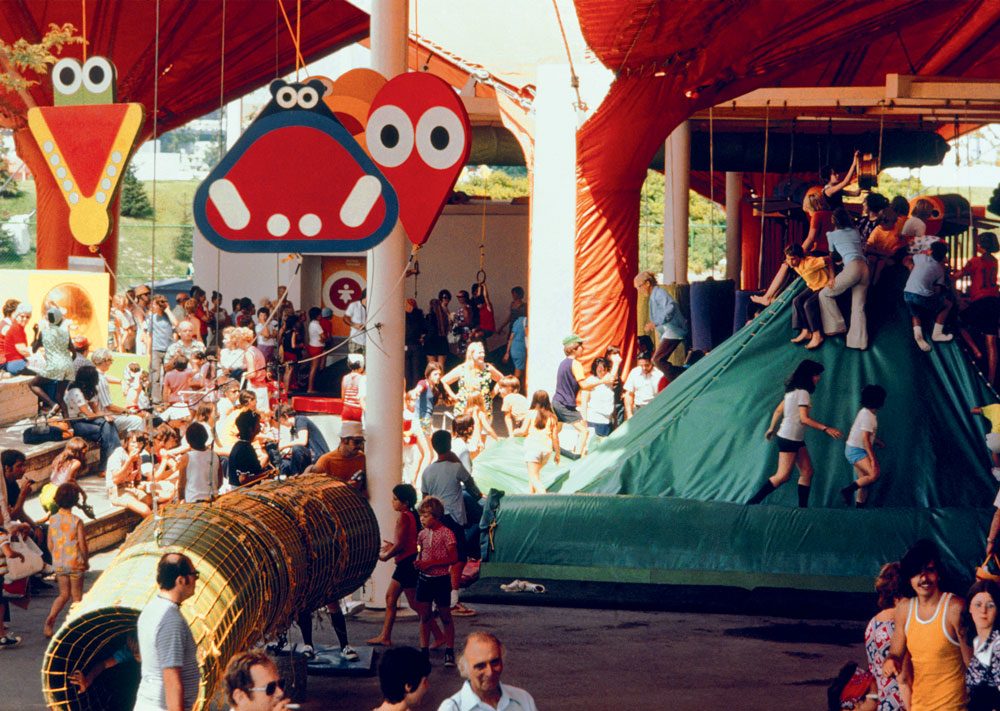
Play time
The greatest playground in Canadian history was built as an afterthought. In spring 1971, Ontario Place opened with all the fanfare and anxiety that attends the launch of any large-scale development in Toronto. Sparked by the success of Montreal’s Expo 67, the massive waterfront project was conjured out of a mixture of large-scale optimism and small-minded jealousy. The park’s somewhat unpromising theme: the glorious past and thrilling future of the province of Ontario.
During that opening season, visitors were awed by the IMAX movies, the open-air Forum theatre and the park’s self-flushing toilets. They ogled architect Eberhard Zeidler’s series of man-made islands and “pods,” which stuck out of the water, skewered by columns. But one oversight quickly became clear: there wasn’t enough for kids to do. When the park decided to build an area devoted to children for the following year, park director Jim Ramsay turned to design consultant Eric McMillan.
McMillan was a lanky, wild-eyed, 30-year-old Englishman with the accent and mannerisms of one of Monty Python’s more unhinged characters. He had designed Ontario Place’s most successful exhibition that year, a multimedia tour through the province’s history, but he’d never built anything for children. During a meeting with Ramsay, McMillan remembers his boss asking for his opinion on the park. McMillan didn’t hesitate. “I think it’s boring,” he said. “Well, what would you do?” asked Ramsay. “I don’t know,” said McMillan. “Give me two weeks.”
McMillan huddled with his assistant David Lloyd, and when they returned it was with a series of sketches for a playscape unlike any seen before, in Toronto or any other city—a colour-blocked kingdom of hanging punching bags, vinyl-clad foam mountains and soaring climbing nets. Children’s Village would be a massive success. It would launch McMillan’s career. It would sit at the centre of kid life for a generation of Torontonians and, briefly, promise to revolutionize the way we play.
All in your imagination
The playground is a curious creation. The first one in North America was a simple pile of sand in Boston’s north end, installed in 1885 by female philanthropists who wanted to give poor immigrant children a place to play and, crucially, a means to assimilate into American society. That push and pull, between providing children with autonomy and controlling them, has been at the heart of playground design ever since. They’re places to expand children’s imaginations while constraining their bodies. “Playgrounds are places made by adults, for children, always with the hope of harnessing their play to a specific location,” writes architecture critic Alexandra Lange in her book The Design of Childhood.
In theme parks, where the prerequisites of play meet the demands of capitalism, the balance between controlling a child’s behaviour and stimulating their creativity becomes more wobbly. Parks in the Disneyland mould are, above all, about managing the play of children, moving them along efficiently, safely and profitably. The equipment is to be used in a specific way, with no latitude for experimentation. The modern theme park seems to offer boundless creativity to its designers while leaving little scope for the children themselves.
McMillan wasn’t interested in controlling kids. In designing Children’s Village, his driving philosophy was simple: “What would I, as a child, like to do?” It’s an interesting question for someone whose childhood was full of Dickensian deprivation and casual violence. McMillan’s biography—a mixture of fact and family mythology that is difficult to untangle—was that he was stillborn during the bombing of Sheffield during WWII, revived by a nurse, and from there life only got harder. “Lots of violence,” he says, “lots of drinking, lots of poverty.”
As a kid, McMillan was often hungry and nearly always dirty. For a time, his family lived in the shadow of the Manchester prison then called Strangeways. They were desperate enough that, one cold winter, his uncle and father broke into the prison to steal coal. He was constantly moving from rooming house to rooming house, school to school. His father was a day labourer, when he had work. On weekends, he would put on his one good suit and play piano in local pubs, earning as much in a single night as he would in a week, before drinking it all away.
The flip side of a childhood of neglect is absolute freedom. “My early memories were just being like a dog, let out in the mornings and let in at night,” says McMillan. In those early years, he would play in the rubble of bombed-out buildings, clambering over the ruins, playing violent games with bricks, building paper airplanes out of the pages of discarded books. There were no restraints, no control.
When he left school at 15, he could barely read or write. He got a job as a painter’s apprentice and prepared for a life as a labourer. The trade school was attached to an art school, however, and as he slowly began to talk with the neighbouring students, the idea of applying there himself became fixed in his mind. He took the exams, got in, and immediately entered a new world. He graduated a few years later, with growing confidence and an enormous chip on his shoulder. After designing museum exhibitions in England, he saw ads looking for a designer for Expo 67 and made his way across the Atlantic.
At one point, McMillan’s personal website included the story of how he escaped his upbringing. He told the story with a characteristic mix of arrogance and deadpan understatement: “I became an apprentice house painter and then moved up to art school, and then I became a genius and moved to North America.”
Mastermind
I’ve known Eric McMillan since I was a child. My father, another English immigrant who found himself in Canada in the 1970s, was also on the original Ontario Place team, as an editor on the park’s first IMAX film, and the two quickly became friends. As a kid, I remember McMillan striding into our house—a wild presence, all jutting elbows and knees, who would appear out of nowhere with a trunk full of plastic balls or a truckload of couch-sized interlocking plastic blocks, prototypes for a new experiment in fort-building.
At Children’s Village, he was given free rein and a $700,000 budget—or about $4.5 million in today’s dollars. The time in which he was working was a remarkably fertile one for children’s design. In the postwar era, with the baby boom, there were suddenly brand new economies around childhood. With government and institutional support, designers felt free to experiment. “People at the highest echelon of design were interested in childhood,” says Lange. “It wasn’t a subset; it was at the centre of design.”
This was the era in which “junk playgrounds” or “adventure playgrounds”—places where tiny children were given tool belts and a fistful of nails and left to build their own forts—proliferated across the continent, including one at the foot of Bathurst Street in Toronto. It was an era in which designers emerging from the ’60s, full of dreams about building political and social utopias, took their visions to the local parks, building abstract sculptures and modernist experiments that children could clamber over.
At Children’s Village, McMillan created a hectare of mayhem under an orange canopy—reproducing his feral childhood scrabbling through rubble in the safety of Toronto, with mountains of colourful vinyl and foam. He erected an enormous spiderweb structure made out of rope that hung from soaring watchtowers. He built a series of wooden ladders that spun on their axes, hurling would-be climbers to the mats below. He strung swinging monkey bars over a pool of water and suspended a forest of punching bags at the centre of the village that was, for decades, the most reliable producer of bloody noses in Toronto.
In my memory, the overriding feeling of entering Children’s Village was of an exhilarating, perhaps even slightly scary freedom. The world under the iconic orange canopy was capacious enough that you always felt as if there were undiscovered corners—a kid-sized hamster wheel beneath a small hill, a new rope bridge from one of the watchtowers you’d never taken. Here, at last, was a place that had been built specifically for you and then left to your dominion. There were no parents to help you in the chaos. Exactly how you chose to scramble your brain flinging yourself between the giant vertical rubber bands was your business. The place was yours. It was your village.
Children’s Village was a hit. Families flocked to it, and international media praised it. McMillan remembers Time calling it “one of the most imaginative playgrounds in the world.” The next year, the Ontario Place brass gave McMillan control over another section of the park, and he set to work creating a water play area. It included lagoons and climbing equipment amid rushing water, enormous squirting faces controlled by pumps and bicycle-powered water guns.
Built before the first water parks or splash pads, McMillan’s attractions were created from scratch, gathering a team of prop builders, metal workers and craftsmen who could manufacture his dreams. One of the early visitors to McMillan’s park was an American named George Millay. Today Millay is credited as the father of the water park, the progenitor of a massive industry. When Millay opened the first Wet ’n Wild in Orlando in 1977, however, the name he gave the children’s area was a tip of the cap to his inspiration: Canadian Water Caper.
With his success at Ontario Place, McMillan became a major figure in the blossoming world of children’s design. “Suddenly I became the world’s expert on child’s play,” says McMillan. People began calling him the next Walt Disney. Over the next decade he designed playgrounds in various SeaWorlds in America and amusement parks in France. He built a park in a mall in Chicago and was shuttled out to Alabama and asked to transform a 3,000-acre plot into a science park. In 1980, McMillan teamed up with Jim Henson’s Children’s Television Workshop to create Sesame Place, the first of a planned series of tactile amusement parks to be built across America with the aim of helping children learn through play.
It was a decade of remarkable creativity. McMillan remembers sitting around with Lloyd one day and looking at a glass jar of pickled onions. “Wouldn’t it be something to be able to roll around in there,” he thought. Shortly after, they ordered masses of light plastic balls for a “ball crawl” in San Diego—the world’s first ball pit, an invention that soon became ubiquitous in McDonald’s PlayPlaces and Ikea stores across the world.
It seemed to McMillan as if he worked in virgin territory, designing places for kids with a seriousness of purpose he says he hadn’t seen before. Watching the way children used his equipment, often in ways he could never have anticipated, made him more and more certain: play wasn’t a frivolous distraction from learning, but something essential to childhood and, indeed, humanity. The line-up-and-go-on-an-iron-ride model of the theme park was unfulfilling. The key was to build things that sparked interaction, between kids and the equipment, but especially between the kids themselves. According to his design philosophy, each park wasn’t just a place to jump on a shockingly large air mattress. It was “a place where a child can ask questions of what it means to be human.”
McMillan formed his own design company, determined to build a series of parks his way. He admits that, after Sesame Place, he began to grow more confident and more arrogant. He had sites in Montreal and Sacramento. He planned to build and also operate his own parks, promising to show everybody how it was done. “I got crazy, mate,” he says today. “I was going to change American culture and, therefore, the world. I was sure I was going to do it.”
Instead, the world changed without him. McMillan’s other parks were never built. The skills required to fund and run a theme park, of course, are very different from the creativity needed to design one. Spoiled by the freedom he had been given at Ontario Place, he often chafed at the demands and restrictions of his new corporate partners. One project fell through, then another. McMillan grew tired of throwing himself into designs, only to watch them collapse. “Eric could project a very pure kind of childlike play,” remembers Hans-Henrich Piersig, a German-born prop builder who was one of McMillan’s collaborators. “But maybe eventually he ran out of steam.”
More than that, the times had changed. If the design for children in the ’60s and ’70s had been full of possibility and experimentation, the prevailing mood in the 1980s was of caution. After a series of lawsuits against playgrounds, “liability,” not “creativity,” became the most important word in children’s design. Most of the adventure playgrounds that once dotted North America were shuttered. The massive wooden jungle gyms in schoolyards were replaced with modest climbing structures. With its bright colours and unruly design, Children’s Village became a relic—a vision of the future from the near past.
Next adventure
Children’s Village closed in 2002. Most of the rest of Ontario Place officially shut down in 2012. Today, as kids like me who grew up getting bloody noses in the punching bag forest are raising children of our own, it’s impossible not to think that Children’s Village represented a brief moment when a different style of mass play was possible. It feels like a strange dream. Were the towers really so high? Did the ziplines really run so fast? Instead of an amusement park in which kids line up for hours to sit passively on a moving piece of intellectual property, what if a park just provided the raw materials for child-instigated, slightly dangerous adventure?
Nowhere is more infused with nostalgia than the places you played in as a child. Looking back on the playgrounds of the past, however, is more than mere sentimentality, and it isn’t limited to people who remember Children’s Village. “There’s something in the air,” says Lange. “We understand that children’s play environment has been impoverished, and so looking back at those times when it wasn’t so impoverished feels really important.”
In spring 2019, the provincial government began accepting proposals for new developments on the Ontario Place grounds. In the years since it closed, there have been plans for a year-round water park, for a casino or an enormous Ferris wheel. There have been calls to relocate Toronto’s Science Centre to the waterfront or turn the entire thing into a public park.
No one’s asked Eric McMillan what should be on the site of the former kids’ utopia he built on the waterfront. Now 78, he lives with his wife, Rose, in the Quebec countryside. He has an orange tree planted indoors. He and Rose grind their coffee by hand, without a machine, build stone walls to divide their various gardens, snowshoe up the hills in the winter. The place is their own personal playground. “I can’t imagine a more privileged existence,” he says. He hasn’t visited his first playground in years. “Ontario Place long ago became a very sad ruin of what could have been an interesting place,” he says.
Still, McMillan can’t seem to stop himself from thinking about it. Recently, he came up with his own proposal for the site. “They can just rip down the pods and turn them into scrap metal and build condos along the edge,” says McMillan. “Or they can go really crazy.”
In his reimagining, the empty pods have been transformed into massive lake filters—sucking up the water from Lake Ontario, cleaning it, and then sending it cascading into the lake below. The design takes Zeidler’s buildings and turns them into massive pieces of interactive art, where kids can help control the flow of water. “It would be a symbol of hope,” says McMillan, a sign that that polluted water can be healed and that, he continues, “However small the first drops are, accumulated they will make a difference.”
The plan for the pods is whimsical and audacious, as outside-the-box and indifferent to the demands of commerce as ever. If people like me think about Ontario Place with warm nostalgia, McMillan, as ever, is only thinking about the future.
© 2019, Nicholas Hune-Brown From The Local, thelocal.to.
Feeling nostalgic? Check out these 10 classic TV shows that could only have been made in Canada.
Reader’s Digest Canada: In a recent livestreamed talk, you said we need sadness now more than ever. Why is that?
Dr. Gordon Neufeld: Sadness is a feeling of futility. It comes when we stop trying to rationalize or problem-solve and acknowledge that there’s something we can’t change. The most obvious example is when we lose a loved one—we fill that hole with tears as part of the grieving process. But people aren’t the only things we mourn. With COVID-19, we are mourning our rituals, our routines. If you’re a student who was preparing to graduate this year, you may be mourning the loss of graduation. Or, if you’re a grandparent, maybe you’re missing spending time with your grandchildren.
So sadness helps us transition to a change?
Yes. Sadness is what keeps a tragedy from becoming a trauma. It’s a bridge that allows us to say goodbye to the old reality and adapt to the new. Adapting is different from adjusting.
How so?
Adjusting is something we can be proactive about—we make changes to fit a certain situation. You might adjust to changing weather by opening up an umbrella, whereas to adapt to the rain would be to function in that climate without constantly dreaming of the sun.
In our current reality, you can adjust to working from home by designating space for an office and stocking up on supplies. Adapting to it is something different. Adaptation is a deep emotional process that is not done consciously, but instead by letting yourself grieve.
When a baby is born they need to adapt to being outside of the womb, and that is done through tears. The first five years of life are then full of all kinds of adaptation associated with accepting frustrations and limitations—your parents are in charge, you can’t have whatever you want whenever you want it. We then continue adaptation into adulthood and through our lives.
Depression rates are spiking right now. Is that a form of sadness or something different?
Well, that’s the whole problem—the fact that we use the words sadness and depression almost as synonyms, when in many cases sadness is the thing that can move us through depression. Depression is an emotional flattening or stuckness, whereas sadness is embracing our emotions, committing to feeling them.
What do you say to people who are coping pretty well at the moment? Do they need to be sad? Are they in denial?
Obviously there are going to be people who are more directly impacted by the current reality. If you are lucky enough to still earn an income, still be able to provide for your family and haven’t lost anyone close to you, you may be less immediately impacted. But I would also say that even those of us who are relatively unscathed could still be avoiding feelings of loss. One of the issues is that, as a culture, we deem sadness as something to run away from. We have become afraid of the very emotion that was meant to save us.
If adapting through sadness isn’t something we can do deliberately, how can we make sure we do it at all?
It’s a good question. Probably the simplest, most direct way to be sad is to take the time to talk with friends or family about what you miss. The goal is to honour the role that the absent person or event or circumstance had in your life. If you don’t fight it, there will be sadness and eyes will start to water.
Another way to tap into sadness is by way of the “emotional playground,” which is how the ancient Greeks described time spent appreciating art as a means to access our emotions. This is done by listening to a piece of music, reading poetry or watching a sad movie that makes you consider your own circumstances.
Some people are doing jigsaw puzzles during lockdown. Does that qualify?
Ha! I don’t think puzzles are an emotional playground exactly. However, my wife and I have been doing them during the pandemic—we’ve completed six or seven—and I find the activity allows me to slow down and take some time for sadness. I’ll put on a really powerful piece of music while we’re doing the puzzle and the rest just takes care of itself.
Find more resources related to the COVID-19 pandemic at the Neufeld Institute.
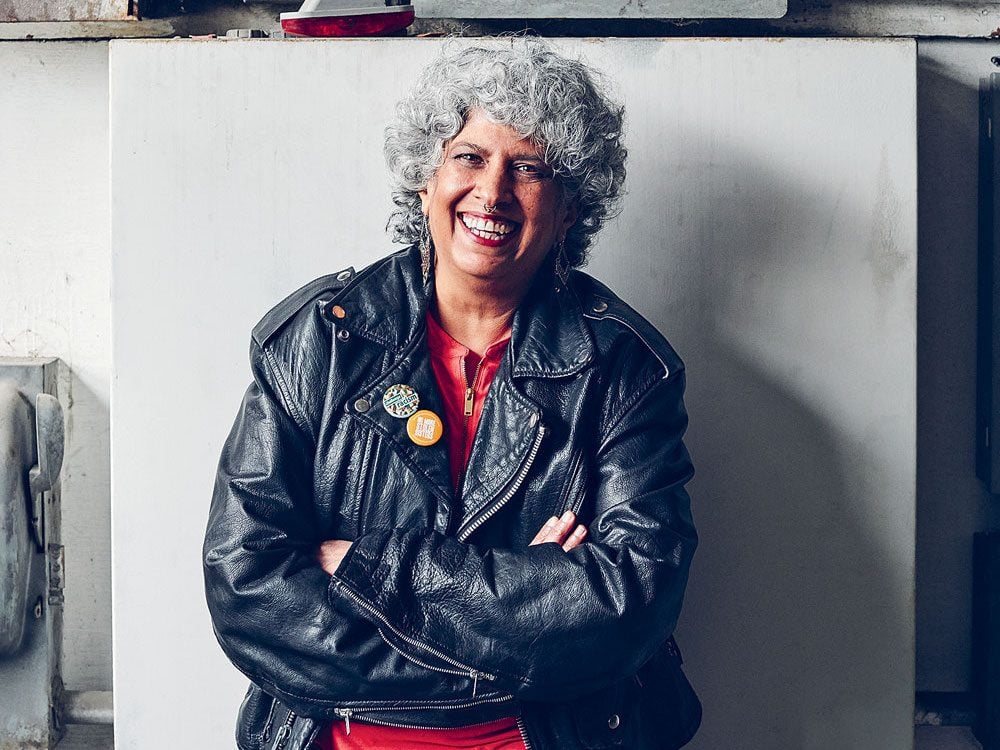
In it together
When the COVID-19 pandemic hit in March, 53-year-old Toronto disability support worker Mita Hans worried that her elderly neighbour might have trouble. Hans asked if she could help out. At first, the neighbour was more annoyed than appreciative, curtly telling Hans to stop “scaremongering” her. “I’m not trying to scare you; I care about you,” Hans responded. A few days later, she dropped off groceries and has done so several times since. “She’s my biggest fan now,” Hans says.
Hans knew her neighbour wasn’t the only person who’d require an extra hand in the coming weeks, as shelves emptied and the entire country went into lockdown. Along with her 46-year-old friend Valentina Harper, who works in e-commerce, Hans launched a Facebook group called “CareMongering-TO.” They imagined the group would connect a few dozen neighbours with others who needed help.
Within two days, hundreds of volunteers had signed up. Soon the group numbered in the thousands, as spinoffs launched in Hamilton and then Halifax. By April, it had gone international. As proof of their impact, the term caremongering is now used to describe thousands of mutual-aid-style groups that have sprung up during the global pandemic. Both Justin Trudeau and Barack Obama have tweeted their praise.
While Hans jokes she didn’t set out to invent a verb, she’s always been invested in giving back to her community. Raised Sikh, she and her siblings performed regular sevas, or selfless services. She now devotes most of her hours away from her full-time job working with disabled adults at Community Living Toronto to the caremongering cause. She says the only way she’s been able to do it all is thanks to the group’s 23 volunteer moderators and admins.
The movement has helped thousands left vulnerable as a result of COVID-19. To ask for help, a person simply posts a request with the hashtag “ISO” (in search of) on their community’s caremongering page. People have asked for everything from groceries and masks to help filling out government funding forms. Volunteers will then meet requests in the comments or post messages that they have goods and services to share.
Most #ISO posts are answered within hours, and many volunteers say helping others during the pandemic has boosted their own well-being. Toronto’s Abigail Millar is one of them. She saw an #ISO post for protective gear in late March from a health care worker and got to work transforming a bed sheet into masks. She has since made more than 3,000. Being a caremonger, says Millar, has helped her through the hard time: “Having a sense of purpose has been really great. I get up, I have my tea, and I get sewing.”
Hans says this reciprocal positivity is an essential part of caremongering’s model. So too is amplifying marginalized voices. Her advisory team includes four Indigenous people and members of the University of Toronto’s Black Medical Students Association. And while she has no plans to turn caremongering into a full-time job, she sees endless potential in expanding the mutual aid framework. “What’s happening right now,” she says, “is sparking all sorts of conversations about how our world operates, who benefits from our economic structure and what we mean by essential.”
She hopes that the basic principle underlying caremongering—giving according to ability and taking according to need—will outlive the pandemic. She says the caremongering model will come in handy as we face the next major crisis. “We’ve got climate change coming,” she notes. “What we’re experiencing now is just a test run.”
Next, read these extraordinary stories of kindness, compassion and bravery.
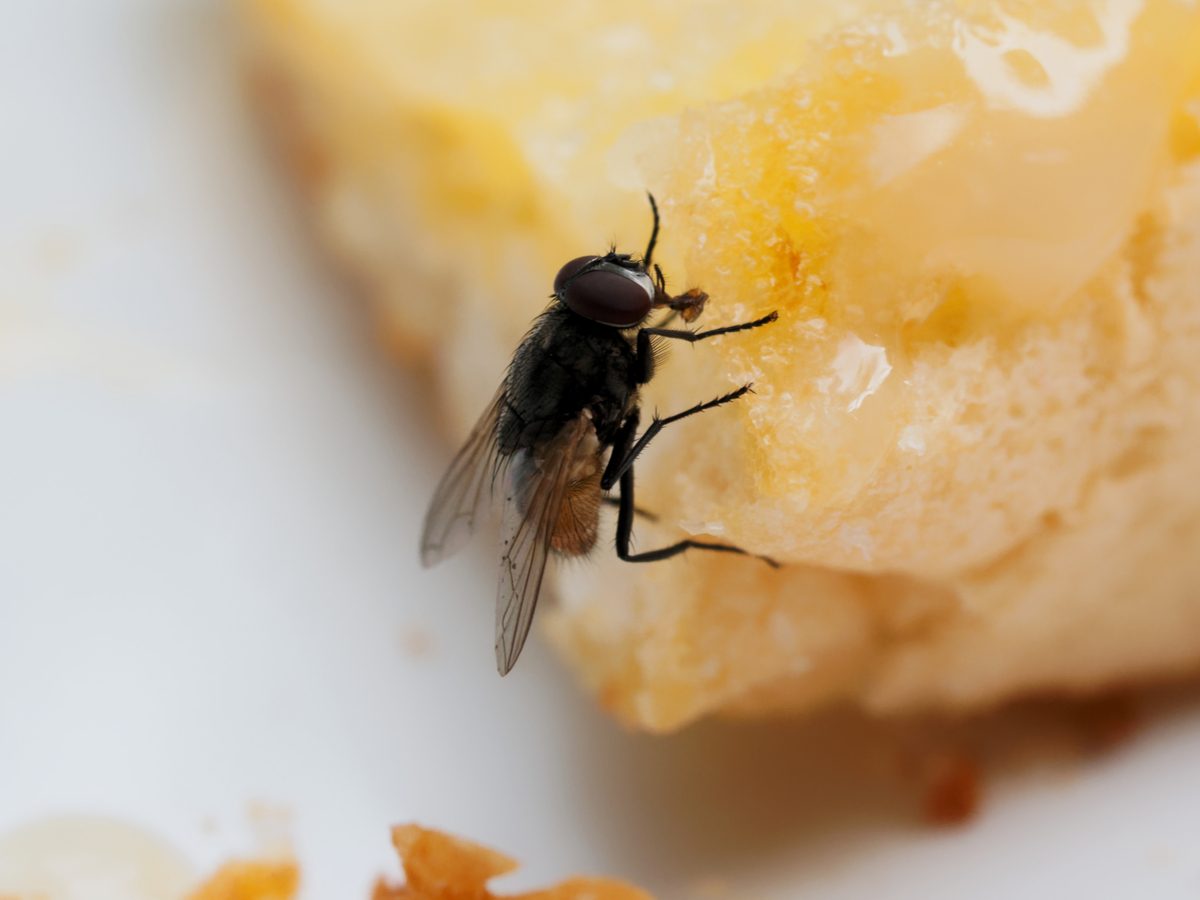
What happens when a fly lands on your food?
When a pesky fly lands on your food, you probably shoo it away and keep on eating. But should you be worried about germs?
There are at least 100 different pathogens houseflies can carry, like bacteria, viruses, and parasite eggs, says Thomas J. Daniels, PhD, associate research scientist and director of Fordham University’s Vector Ecology Lab at its Louis Calder Center.
Once a fly picks up germs, it can spread the disease in a few ways. Bacteria and viruses on contaminated food, manure, and other germ-heavy spots stick to a fly’s body and the tiny hairs on its legs, says Daniels. When it flies away and lands somewhere else—like your food—it leaves some of those germs behind. “So we’re potentially at risk even from a fly landing on food, though the amount of pathogen transmitted is likely to be small,” Daniels says.
But the bigger concern comes from fly vomit. And yep, it’s as gross as it sounds.
When a fly lands on your dinner, it isn’t biting tiny nibbles off your plate. Instead, the insect vomits digestive juices onto the food to break it down so it can “lap up a liquid meal,” says Daniels. But that’s not even the worst part.
The vomit is full of germs from its last meal. And the pathogens inside the fly live longer than the ones on its feet, which means there’s a bigger chance the bacteria and viruses stay alive. Those germs mix with the fly vomit and stay in the fly’s mouth until the next time it eats, creating a recipe for disease.
What germs could flies spread?
Some of the germs can be pretty scary. Scientists know flies can spread E. coli, salmonella, hepatitis A, and rotavirus, says board-certified infectious diseases specialist Brent W. Laartz, MD, author of How to Avoid Contagious Diseases. There’s also Shigella—a group of bacteria that can cause diarrhea, fever, and stomach pain—which is particularly concerning because it doesn’t take much for the bacteria to make you sick.
But before you start dumping all the food on your dinner table, know that not every fly will carry all (or any) of those germs. The ones mentioned above are all fecal bacteria and viruses, which don’t exist on everything flies eat. “The fly would have to land on raw meats or feces to spread these bacteria [and viruses] to your food,” says Dr. Laartz. The cleaner your kitchen, the less chance that the fly picked anything up before munching on your meal.
Plus, just one fly on your food isn’t a guarantee that you’ll get sick from its germs. Depending on how many germs the fly carried, how long it sat on your food, and how strong your immune system is, you might never get infected, says Daniels. So if a lone fly landed once on your food and your house is clean, you can probably keep eating safely, says Dr. Laartz.
The bigger worry would be if you’re in an area buzzing with bugs, like a picnic. After all, the more flies that land on your meal, the more germs they could leave. “Cover your food while you are waiting to eat it,” says Dr. Laartz, who suggests using a fly cover or another plate. If you see flies buzzing around food that you’ve left uncovered for a while, throwing it out is your safest bet, says Daniels.
Next, here’s what restaurants could look like after the COVID-19 pandemic.
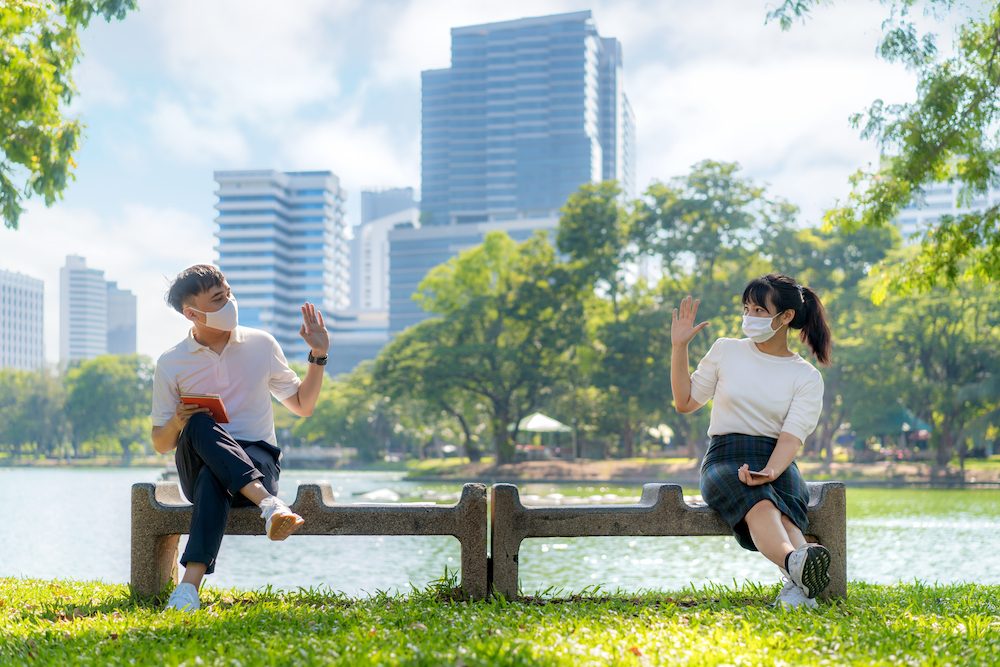


 I Had a Baby During Coronavirus" width="295" height="295" />
I Had a Baby During Coronavirus" width="295" height="295" /> 50 Ways to Fall in Love With Toronto" width="295" height="295" />
50 Ways to Fall in Love With Toronto" width="295" height="295" />